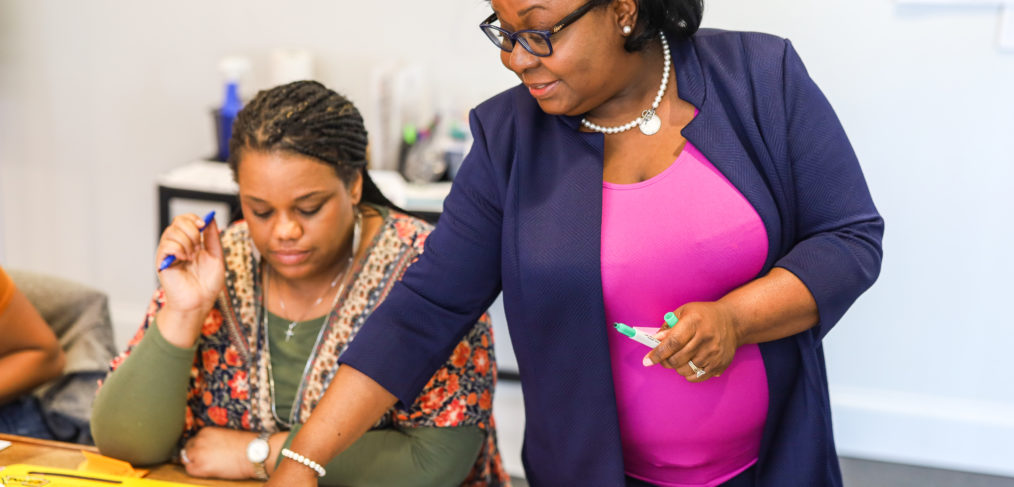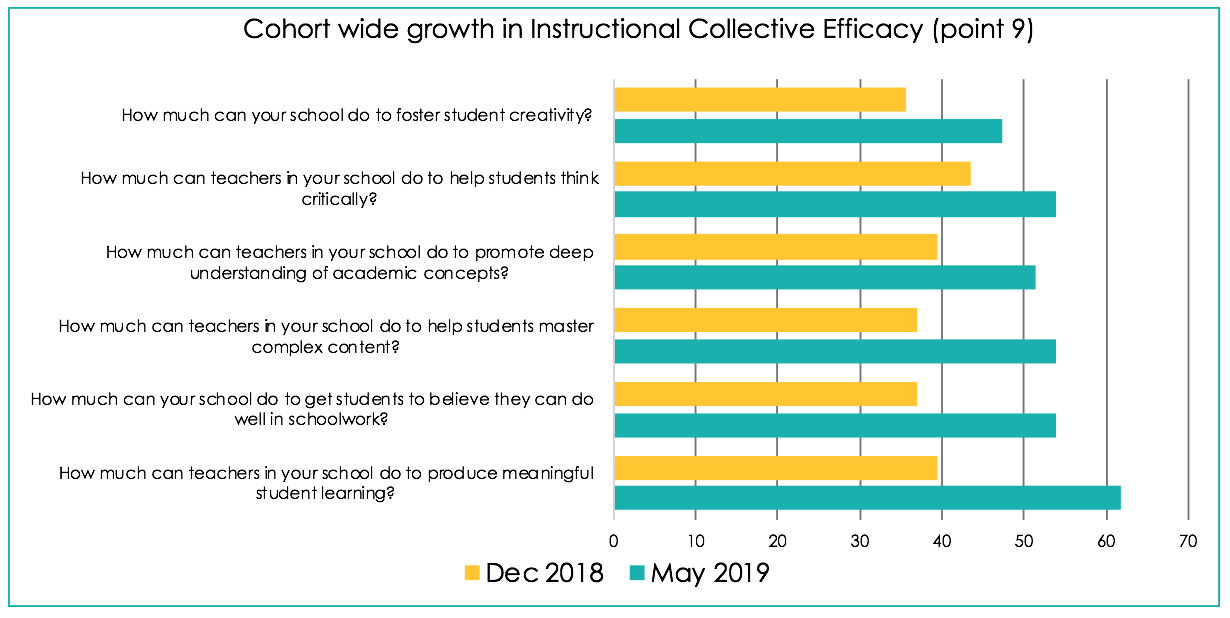
What is Collective Efficacy? How it impacts student achievement.
“We’re actually getting excited about the work that we’re doing—and that is what is going to make the difference.”
—Kathy Rackley, Principal
Walnut Creek Elementary
Raleigh, North Carolina
According to education researcher John Hattie, collective efficacy is more predictive of student achievement than homework, socio-economic status, student motivation, and home environment. But what is “collective efficacy”?
At TrueSchool, it’s a term we use often, and it has greatly informed our ideas about how to support teachers in transforming student outcomes. With our TrueSchool Fellowship—a year-long experience for teachers and principals—our main goal is to improve student learning and address inequities that deny some students of color and students from low-income families access to a high-quality education. In our Fellowship, educators work as a team to come up with ideas to improve student learning. However, this is a difficult goal to measure, especially after only months of work with our Fellows.
Here’s where “collective efficacy” comes in. Collective efficacy is the confidence that educators have in their team’s ability to impact student achievement. It’s the feeling that our goals as a community are within reach if we all work together. This may sound simple, but we’ve found that many teachers don’t have the time or capacity to collaborate and put their creativity to its best use. We want educators to be the ones dreaming up and implementing initiatives in their schools.
Through our TrueSchool Fellowship, educators are given time and resources—including day-long studios, personalized coaching, and micro-investments—to learn from each other and to think big. These dynamic opportunities inspire educators and remind them why they love teaching.
Connie Cochnar, a TrueSchool Fellow from Chapman Public School in Chapman, Nebraska, reflects on the small shifts that make big change possible: “I realized that it is the little things you do that can create the most success. Our TrueSchool team is willing to do many “little things” for our children and their families to help them become an exceptional community of learners.”

We use collective efficacy as a way to measure the impact of our work. From surveys given to 2018–19 TrueSchool Fellows before, during, and after their time with our experienced TrueSchool Coaches, we’ve learned a lot. We’ve seen significant improvement in collective efficacy, and these changes are backed by quantitative data and Fellows’ personal accounts of their time working with us.
- 64% of TrueSchool educators grew in their sense of collective efficacy and 23% of educators grew by more than 10%.
- TrueSchool Fellows are more satisfied with working in their schools and districts. A high retention rate allows schools to retain institutional knowledge and helps teachers deepen relationships with students and community members.
- Following the Fellowship, educators feel empowered to make decisions about curriculum and teaching styles with the input of their students and local communities.
- Educators are able to find new ways to tap into resources that already exist at their schools.
- 92% of educators participating in the Fellowship are finding new ways to take skills and mindsets from the program into the future, promoting short- and long-term change at the school level.
To learn more about collective efficacy and the TrueSchool Fellowship, read our annual impact report.
And if you’re ready to see how your team can impact student learning at your school, apply for the 2020 TrueSchool Fellowship before the priority deadline, September 15. All applications are due October 15.
